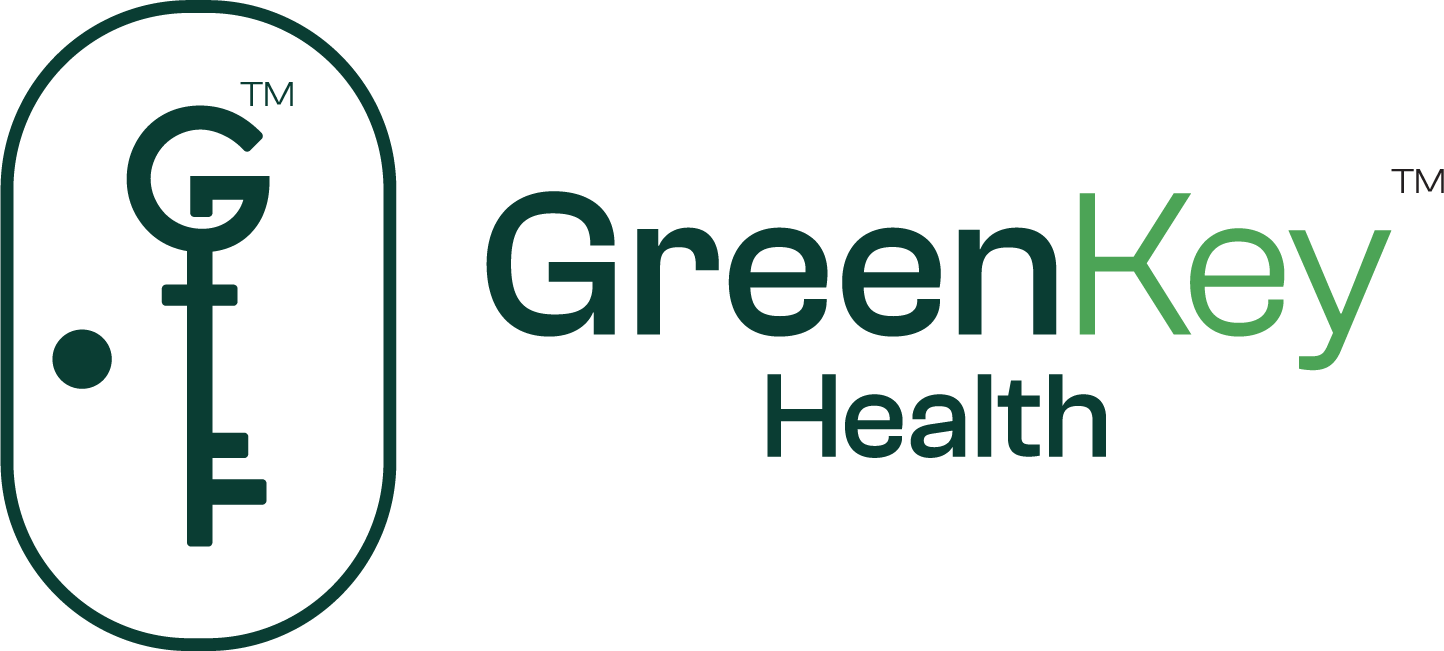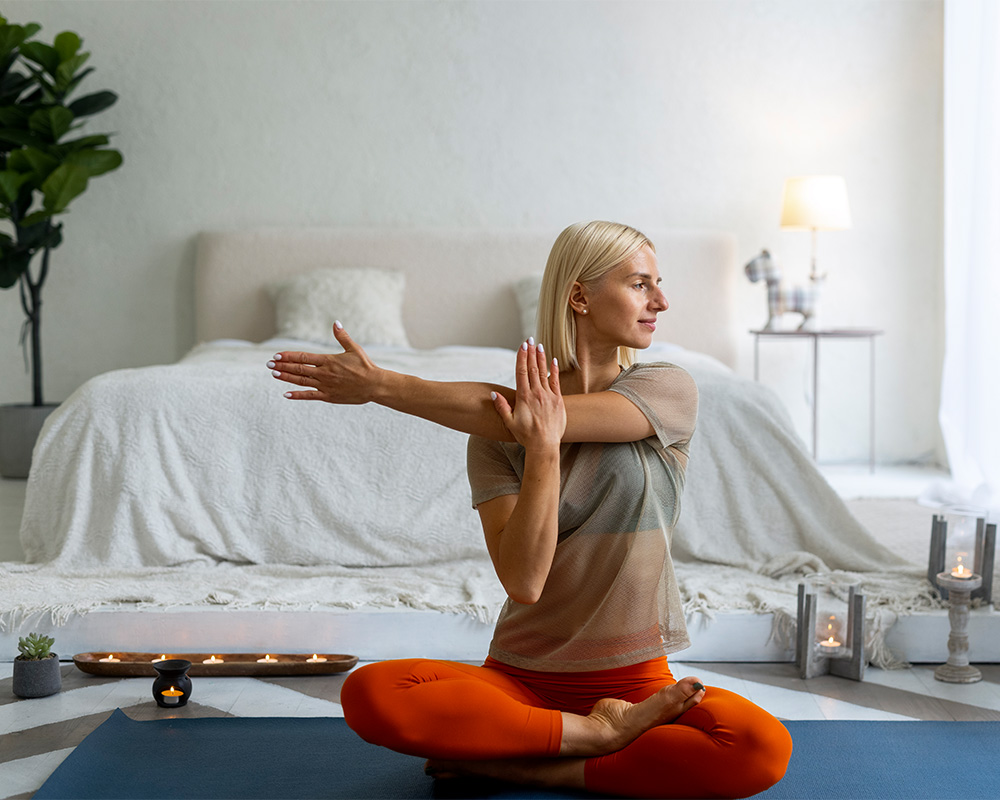A good night’s sleep begins with a relaxed body and a calm mind. Additionally, incorporating a few simple stretches into nightly routine can make all the difference. Stretching before bed helps to release muscle tension, enhance flexibility, and promote better circulation. Furthermore, it set the stage for deeper, better, and more restorative sleep. Whether it’s a physically demanding day or a sedentary lifestyle where individuals are desk-bound, stretching before bed helps to ease and unwind.
In addition to this, any stiffness or discomfort can be released through stretching and relaxation techniques. Stretching allows individuals to unwind and prepare for a peaceful night. In this guide, let’s explore some of the top stretches that can help relax a body and prepare for a restful night. Moreover, these stretches may also help in reducing stress while improving overall sleep quality. Not only do these stretches help in unwinding but also caters to restorative sleep, resulting in refreshed and rejuvenated mornings. This guide is about exploring top stretches for a restful night that could relax the body and unwind. Keep skimming to gain valuable insights into the topic.
Optimal Timings and Techniques for Stretches Before Bed
To maximize the benefits of nighttime stretches, aim to incorporate them into the routine about 30 to 60 minutes before going to bed. Remember, consistency is the key. Therefore, choosing a time and place where an individual is most likely to stick with the routine is highly recommended. Also, stretches are meant to be done until one is fully exhausted. It should be taken as a final task to unwind.
Furthermore, try to begin the stretching routine with some deep and calming breaths. If one is feeling anxious or stressed, it is recommended to spend five to ten minutes focusing on relaxing the entire body. This way it will help an individual to enhance the effectiveness of the stretches.
Additionally, the goal of stretching before bed is to gently lengthen the muscles without overextending. While one might feel some mild discomfort, it should never be painful. Therefore, ensuring steady breathing and maintaining it throughout each stretch is crucial to relax.
Is Stretching Before Bed Beneficial?
Incorporating the right set of stretches in the nighttime routine offers a range of benefits. Stretching helps to release muscle tension while mitigating discomfort that might otherwise keep an individual awake. If an individual suffers from sleeping due to tight or restless muscles, stretching before bed could provide significant relief. Research suggests that stretching before bed can improve sleep quality, increase flexibility, and help to manage insomnia. Additionally, it may help reduce feelings of tension and anxiety.
If an individual finds it challenging to fall asleep or stay asleep, integrating stretching into pre-sleep routine could be particularly helpful in many ways. While many people can benefit from stretching before bed, those with muscle tension, anxiety, or insomnia may see the most improvement. However, if an individual has a physical injury or mobility issue, it’s recommended to consult a healthcare professional before starting a new stretching routine.
Stretch Your Way to Sleep—Unwind Muscles and Prepare for Sleep
A nightly stretching routine is an effective way to release the physical and mental stress accumulated throughout the day. Moreover, it is the best and most effective way to unwind and release tension. By gently lengthening and relaxing muscles, one may prepare the body for deep and restorative sleep. Below are some of the best stretches to include in pre-bedtime routine to help relax the body and calm the mind.
Child’s Pose
Child’s Pose is a calming stretch that gently elongates the back, hips, thighs, and ankles. Additionally, it helps soothe the nervous system as well.
How to Do It: Kneel on the floor with the toes together and knees apart. Sit back on the heels, stretch arms forward, and rest the forehead on the ground. Breathe deeply, focusing on releasing tension in lower back and hips. Stay calm in the position for 30 seconds or so.
Benefits: This pose helps mitigate lower back pain while reducing stress and fatigue. Additionally, it promotes relaxation by grounding the body and encouraging deep, diaphragmatic breathing.
Stretch the Neck to Relieve Tension
Neck strain or tension is a common issue caused by daily activities, such as hunching over a desk or looking at a computer screen constantly. Moreover, certain positions at an improper height may add to neck tension. Neck stretching before bed can help ease this tension and prevent discomfort during sleep.
Furthermore, it promotes peaceful, restorative sleep fueling fresh and rejuvenated mornings. Following are some easy neck stretches;
Sit comfortably or stand with a straight back, gently tilt the right ear towards the right shoulder until a stretch is felt alongside the neck, Hold the position for 5 to 10 seconds.
Repeat the stretch on the left side, Perform this stretch two to four times on each side for tension relief.
Cat-Cow Stretch
The Cat-Cow Stretch is a dynamic movement that warms up the spine. It is one of the most effective stretches that helps in releasing tension in the back and neck. Not only does this stretch help in reducing tension but also encourages gentle mobility. Incorporating this practice as a part of an individual’s ‘stretching before bed’ routine.
How to Do It: Start on all fours, with hands directly under shoulders and knees under the hips. Inhale and arch the back, lifting head and tailbone toward the ceiling (Cow Pose). Exhale and round the back, drawing the chin to the chest (Cat Pose). Repeat this flow for a few times as per convenience.
Benefits: This stretch improves flexibility in the spine and alleviates back and neck discomfort or tension. Additionally, it promotes a calm mind through coordinated breathwork.
Supine Twist
This practice comes under a gentle twisting pose that stretches the back muscles and spine. It helps in relieving tension and promoting a relaxation mode for a restful sleep.
In addition, this stretch improves spinal flexibility, aids digestion, and mitigates lower back pain. Furthermore, it also helps release emotional and physical tension stored in the body.
How to Do It: Lie on the back with knees bent and feet flat on the floor. Extend the arms out to the sides, palms facing up. Lower the knees to one side while keeping shoulders flat on the floor. Hold onto this position for a few seconds and repeat on the other side.
Happy Baby Pose
Happy Baby Pose is a gentle stretch that opens the hips, inner thighs, and lower back, encouraging relaxation and a sense of calm.
Furthermore, this pose is helpful in releasing the tension in the lower back. Also, it calms the mind and prepares the body for a long restorative sleep. Including this in ‘stretching before bed’ routine can exert a favorable and positive impact on sleep health.
Seated Forward Bend
Seated Forward Bend is a gentle stretch for the hamstrings, lower back, and shoulders that encourages deep relaxation and mindfulness.
Additionally, it helps to relieve tension in the back and shoulders while reducing anxiety. Moreover, it calms the nervous system which makes transitioning into sleep easy.
How to Do It: Sit on the floor with legs extended straight in front of you. Inhale and lengthen the spine while hinging forward from the hips. Try reaching for the toes. Hold the stretch without forcing to go deeper. However, try to relax the body while being in the same posture. Stay in the same position for 3 seconds and release.
To Wrap Up
Incorporating these simple, gentle stretches into nighttime routine can make a significant difference in sleep health and reduce sleep-related issues. Moreover, these practices may help unwind and release tension, ensuring smooth transitioning into sleep. Stretching before bed not only helps to release physical tension but also calms the mind, paving the way for deeper sleep.
Additionally, taking just a few minutes each night to practice these poses and learn the postures can enhance flexibility and reduce stress. Furthermore, these poses may help establish a bedtime ritual that promotes overall well-being and better sleep quality. Try these stretches and experience a more peaceful, rejuvenating sleep for a fresh and productive start!





